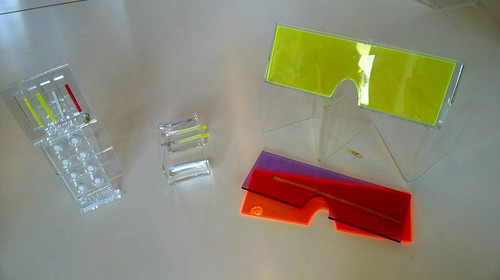Maker Sprint
Introduction
The highly anticipated journey at MediaLab Amsterdam took-off with the Makers Sprint. Having three days in the agenda, the teams were asked to create a Boundary object revolving around the context of the project assigned. ‘Boundary objects’, a common term in sociology are objects that connect people in multi-disciplinary fields to help each other understand better.
The Makers Sprint was held at the Makers Lab in Benno Premslahuis, Amstel Campus. The lab housed various kinds of innovative model-making machines which kindled us to think beyond borders for the object we were going to create. At the end of the sprint, an expo was curated at Studio HvA to showcase people the created objects and obtain different perspectives on the same.
Context
The KLM project brief primarily deals with revamping their 25-year-old data centre situated in Amsterdam aiming towards lower energy consumption for the future to come. The main intent of the project is working towards an innovative idea addressing the problem of high energy consumption giving particular attention to the lighting sector. Adhering to KLM’s motto of ‘The Winning Way of Working’, the expected outcome is a smart and sustainable way of lighting system inching towards an intelligent environment.
Objective
After a brief presentation about the outline of the sprint, there were four goals which were evident:
- use as many machines as you can
- create two or more objects that let people experience the problem area
- create an expo
- discuss your work with people, try to have conversations that will help you proceed in your project
The fundamental motive of this exercise was to use the resulting boundary objects as a tool to initiate a dialogue thereby sparking a discussion related to the project to gain different views.
Aim
Our aim was to design an alternative, conceptual model with a speculative approach to it creating a provocative thought. This exploratory methodology adopted, resulted in opening up doors by welcoming farfetched ideas into potential interpretations. The underlying point was to keep it simple yet thought provoking.
Process
The discussion started with an intense brain-storming session which was organized by our mentors Loes and Tamara. The intent of this process was to flush out all the abstract ideas and convert it into words, mappings or diagrams and give it a form. This was a crucial step in helping us construct the intangible ideas to a more tangible output. By the end of this session we had unanimously agreed on creating a conceptual prototype which triggers the employee’s way of working causing a change in the user behaviour.
The next step was getting into the designing part after discussing the outline of our product. At first we made a conceptual prototype out of cardboards and later got into the technicalities of it. Loes and Tamara helped us through the entire process by giving us necessary guidance regarding materials, machines and the workability of our product since it had a more exploratory nature to it.
We attempted at availing maximum use of the facilities given to us by planning out the construction of our products. The idea was to experiment with a combination of techniques like laser cutting, Acrylic bending and Vacuum molding in the creation of our product because it also augmented the idea of futurism.
Product
Our conceptual creations are displayed in the image above
The Effiglass as we call it is an innovatively designed eyeglass changing the colors of the surrounding for the user. The way the user views his world has a direct influence on his mood, behavior and productivity creating an overall positive field of sphere. The colors auto-adjust according to his feeling in order to improve the work efficiency.
Besides the glasses, the Effisupps are designed to represent the pills of the future. A bracelet is worn along with the eyeglass which injects the effisupps filled in the containers directly into one’s bloodstream. The pills perform on a 24 hour basis- day and night. The Day pill accentuates the user to stay awake, working more efficient. Alternatively, the night pill emphasises on helping the user get deeper sleep. The functionality of the products is designed on a conceptual level which paves way to eccentric futurism.
Though Effi products are seemingly sci-fi objects, it is an attempt to provoke people into re-thinking a productive approach to the general pattern of working. Paradoxically, it is legitimate to debate that the future we are talking about is already here, for instance we find certain functions of the Effi product in the present day. Apple Watch and Google Glass are prototypes of speculative-tech devices. Besides these, Red Bull, Monster Energy and Frisk are used for boosting productivity.
In the picture above the main idea of the Effi range of products is visualized. The products are designed sleek and sci-fi, abstracting a reference to the future. The Effiglass is meant to influence the behaviour and the pills would only reinforce the efficiency of the glasses. As a result, employees can accomplish more work in the stipulated amount of time, resulting in them leaving earlier which leads to saving time and energy for their employers.
Gained Insights
To make conceptual ideas tangible and experimental to stimulate people’s imagination.
People also think that there is a good chance this could be coming alive in the near future.








